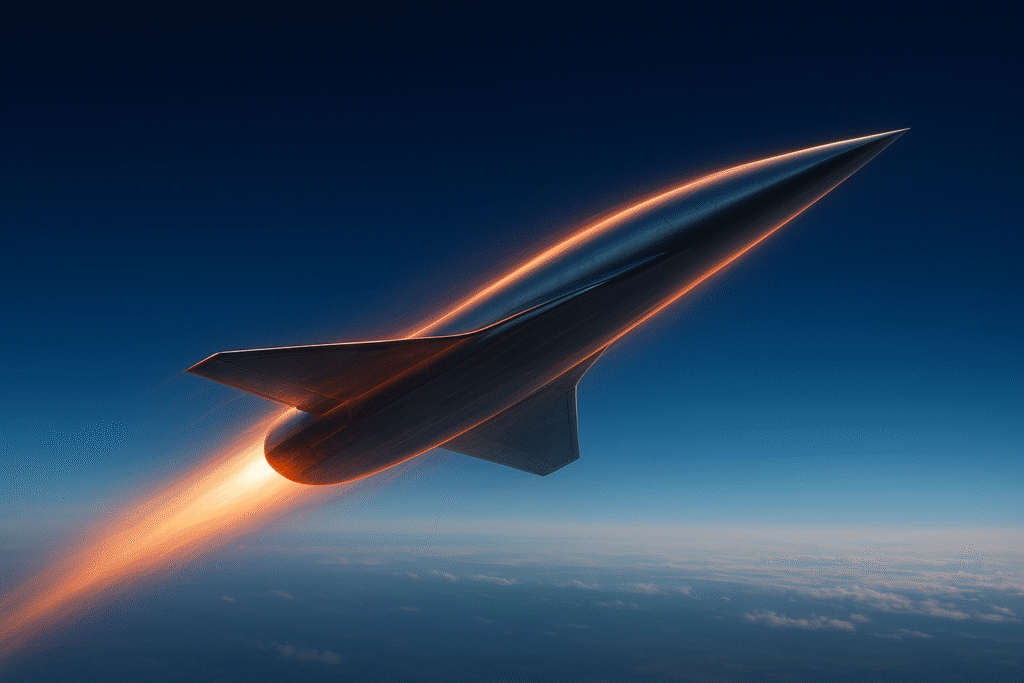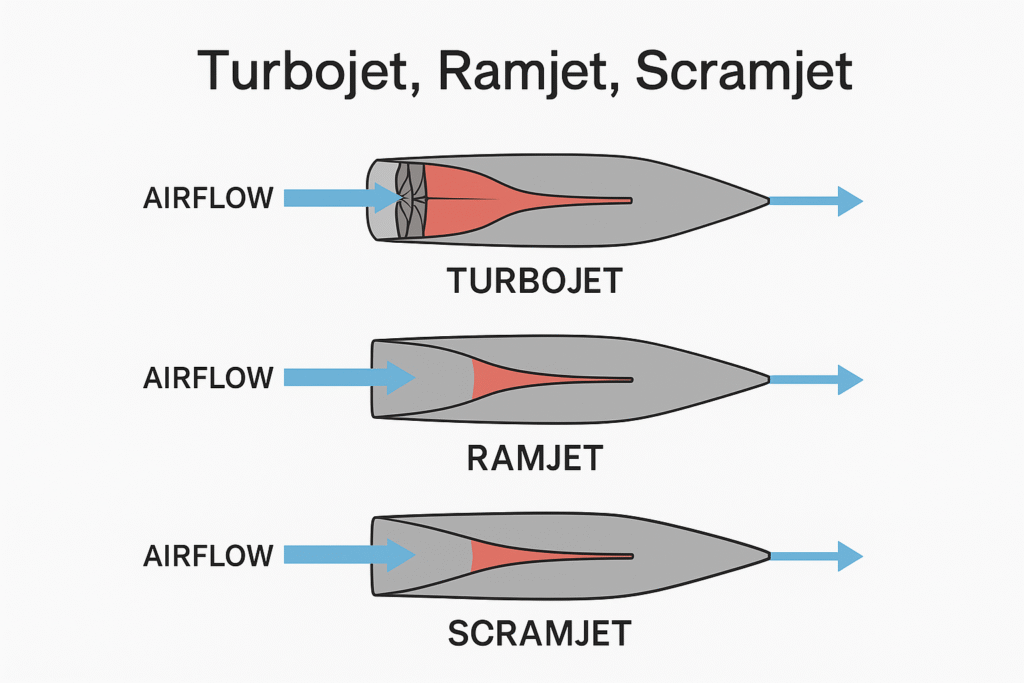Introduction

For decades, it was the absolute pinnacle of human speed. That slender, needle-nosed bird, carrying the elite from New York to London in a mere three hours, was a roaring, sonic-booming testament to our engineering prowess. It was the symbol of supersonic travel—a dream of a faster, smaller world.
But here’s the uncomfortable truth we’re only just waking up to: we were dreaming too small.
While we were mesmerized by the magic of breaking the sound barrier (Mach 1), a quiet, much more profound revolution was brewing in the wind tunnels and research labs of the world’s major powers. The age of supersonic is a delusion—a charming, but ultimately limited, chapter in the story of speed.
The real story, the one that is actively reshaping global security and the future of aerospace, is happening at Mach 5 and beyond. This is the hypersonic era, and it’s not just an incremental step forward. It’s a quantum leap into a new paradigm.
So, what happens when a vehicle or weapon is so fast, so agile, and so unpredictable that it renders our current defenses almost obsolete? Let’s dive in.
Part 1: Defining the Divide – It’s More Than Just a Number
It’s easy to get lost in the jargon. “Supersonic,” “hypersonic”—they both just mean “really fast,” right?
Wrong. The difference isn’t just quantitative; it’s qualitative. It’s the difference between driving a Formula 1 car and riding a meteorite.
The Magic Number: Mach 5
Let’s put Mach 5 in perspective. Mach 1 is the speed of sound, about 767 mph at sea level. The Concorde cruised at a cool Mach 2.04. Reaching Mach 5 means traveling at least 3,836 mph, or about 1 mile per second.
At that speed, you could fly from New York to London in roughly 60 minutes. The physics involved aren’t just “more intense” versions of supersonic flight; they change entirely. Entering the hypersonic regime is like stepping into a different universe, governed by three brutal new rulers: Heat, Air, and Plasma.
The Thermal Barrier: A Walk on the Sun
While supersonic aircraft like the Concorde dealt with significant heat (leading to its famous thermally-expanding fuselage), hypersonic vehicles face an inferno. The friction from the air molecules slamming into the vehicle at Mach 5+ generates temperatures between 1,500°C and 2,000°C (2,700°F – 3,600°F).
That’s hotter than the melting point of steel. Surviving this requires a materials science revolution. We’re talking about advanced ceramic matrix composites, special carbon-carbon materials, and actively cooled skins—technology more akin to the heat shield of a space capsule than the aluminum skin of an airplane.
The Scramjet: The Engine That “Breathes” Fire
This is the heart of sustained hypersonic flight. A traditional jet engine has fan blades to compress air. At hypersonic speeds, those blades would melt and tear apart in an instant. A rocket carries its own oxygen, but that makes it heavy and limited.
The solution? The scramjet (Supersonic Combusting Ramjet).

Think of a scramjet as an incredibly sophisticated, high-speed air scoop. It has no moving parts. It only works when it’s already moving incredibly fast (typically above Mach 3-4). At that point, air is forced into its inlet at hypersonic speeds, is mixed with fuel, and ignited in a fraction of a second before being expelled out the back. The vehicle is, in essence, “flying on its own shockwave.” It’s an engineering marvel of controlled chaos.
The Plasma Sheath: The Unwanted Cloaking Device
As the hypersonic vehicle heats the air around it, it creates a cloud of ionized gas—plasma. This isn’t just a visual effect; it’s a major operational hurdle. This plasma sheath acts as a radio signal blackout zone, blocking standard communications and, crucially, making the vehicle incredibly difficult to track with traditional radar. It’s like nature itself provides the ultimate stealth technology.
Part 2: The Strategic Imperative – The Game of Throws is Over
So, we have a vehicle that can go mind-bendingly fast while surviving sun-like temperatures and being shrouded in a communications-killing plasma cloud. Cool science, but why does this matter to anyone outside a research lab?
Because it changes the fundamental rules of global security and warfare.
Survivability: The “Unstoppable” Aura
For decades, the doctrine of mutually assured destruction (MAD) has been anchored by the Intercontinental Ballistic Missile (ICBM). An ICBM is terrifyingly fast, but its path is predictable. It launches on a high, parabolic arc into space, like throwing a rock, before its warheads come screaming back down. This gives ground-based radar systems 20-30 minutes to detect the launch, track the trajectory, and calculate an intercept point.
Hypersonic weapons, particularly Hypersonic Glide Vehicles (HGVs), shatter this model.
They don’t follow a simple arc. After an initial rocket boost, the glide vehicle is released and skips along the upper atmosphere like a flat stone on a pond. It can fly at lower altitudes than an ICBM, staying under the coverage of many radar systems for longer, and—most critically—it can maneuver.
Imagine trying to catch a bullet. Now imagine that bullet can suddenly zigzag, change its altitude, and alter its target in the final moments of flight. That’s the intercept problem posed by hypersonics. Current missile defense systems, designed to hit a bullet with a bullet on a predictable path, are largely obsolete against this threat.
The Collapsed Timeline: From Minutes to Seconds
This isn’t just about making defense harder; it’s about compressing the entire decision-making cycle of a nation. The warning time for a hypersonic attack isn’t half an hour. It could be mere minutes or even seconds.
This collapses the “OODA Loop” (Observe, Orient, Decide, Act) for commanders and world leaders. The time for deliberation, for confirming intelligence, for consulting allies, evaporates. The pressure to delegate launch authority to AI systems or lower-level commanders increases, raising the terrifying risk of miscalculation and accidental escalation. Hypersonics don’t just destroy targets; they destabilize the very foundation of nuclear deterrence.
Part 3: The Global Race – The New Great Game
Unsurprisingly, a technology with this much disruptive potential has sparked a full-blown, multi-trillion-dollar global arms race. This is no longer theoretical; it’s operational.
- Russia: Moscow has been the most vocal, positioning itself as the leader. They have publicly announced the deployment of the Avangard, a nuclear-capable HGV that they claim can fly at Mach 20 and perform “aerobatic” maneuvers. Their Kinzhal (“Dagger”), an air-launched ballistic missile fired from a MiG-31 jet, is also classified as hypersonic and has seen use in Ukraine.
- China: Beijing is investing heavily and is considered by many analysts to be the technical leader in certain areas. They have conducted hundreds of tests on their DF-ZF hypersonic glide vehicle. In a stunning 2021 test, they reportedly launched a weapon that orbited the globe before deploying a hypersonic glide vehicle—a capability that took US intelligence completely by surprise.
- United States: Playing a frantic game of catch-up. The US has numerous programs in development, from the Air Force’s Air-launched Rapid Response Weapon (ARRW) to the Defense Advanced Research Projects Agency’s (DARPA) Hypersonic Air-breathing Weapon Concept (HAWC). After witnessing the advances of its peers, funding and urgency have been dramatically ramped up.
- The Chasing Pack: Other nations, including India, Australia (in collaboration with the US), and a consortium of European countries, are also deep in development, ensuring this technology will not remain the exclusive domain of the top three for long.
Part 4: Beyond the Battlefield – The Peaceful Promise of Mach 5+
It would be a tragedy, however, to view hypersonics solely through the lens of conflict. The same physics that create an unstoppable missile also hold the key to a revolutionary future in space and travel.
The Spaceplane Dream
For decades, we’ve dreamed of a Single-Stage-To-Orbit (SSTO) vehicle—a craft that takes off like a plane, flies directly into orbit, and lands back on a runway. Hypersonic technology, specifically scramjets, is the missing link.

Imagine a hybrid vehicle. It uses a turbojet to take off from a conventional runway. As it accelerates, it switches to a ramjet, then to a scramjet, riding its own shockwave to the edge of the atmosphere at Mach 10 or higher. At that point, a small, final rocket boost kicks in to push it the rest of the way into orbit.
This “air-breathing” approach to spaceflight could slash the cost of reaching orbit by orders of magnitude, opening up space for manufacturing, tourism, and deep-space exploration in a way we can only imagine today.
The Return of Extreme-Speed Travel
Yes, the dream of passenger travel at Mach 5 is alive, but the hurdles are immense. The sonic boom over land for a hypersonic vehicle would be cataclysmic, likely restricting routes to long, over-ocean flights. The cost of a ticket, given the exotic materials and immense fuel consumption, would be astronomical.
Yet, the potential is there. Companies like Hermeus are already working on hybrid engines that could eventually lead to Mach 5 business jets. The journey from Sydney to Los Angeles, which currently takes 15 hours, could be reduced to a brief 2-hour hop. It’s a long-term vision, but one grounded in the very real science being proven in military tests today.
Part 5: The Inevitable Future – Hurdles and the Horizon Ahead
The path to a hypersonic future is not without its obstacles. The challenges are as immense as the speeds involved.
- Cost and Complexity: Each test flight costs hundreds of millions of dollars. The materials are exotic and difficult to manufacture. The margin for error is zero.
- Control: Flying predictably and reliably in the “hypersonic regime” is one of the most difficult problems in aerospace. The aerodynamics are poorly understood and incredibly complex to model.
- Arms Control: We are entering a new, unstable era with no agreed-upon rules of the road. How do you verify a treaty on weapons that are invisible to radar and can change course instantly? The risk of a new, terrifying arms race is very real.
Conclusion: The Future is Fast, and It’s Already Here
The supersonic delusion is over. We spent a generation marveling at Mach 2, only to look up and see the horizon of Mach 20 rushing toward us. Hypersonic technology is not a niche project or a sci-fi fantasy; it is the undeniable, logical, and terrifying next step in the pursuit of speed and advantage.
It represents a fundamental shift in the landscape of power. The nations and corporations that master the hellish physics of Mach 5+ will not only hold a decisive military edge but will also hold the keys to the next chapter of the space age and global connectivity.
The sonic boom was the sound of the past. The silent, shimmering heat haze of a hypersonic vehicle streaking across the upper atmosphere—that is the sound of the future. And it is arriving faster than we can possibly imagine.
What are your thoughts on the hypersonic revolution? Is it a force for stability or a dangerous new frontier? Share your thoughts in the comments below.



0 Comments